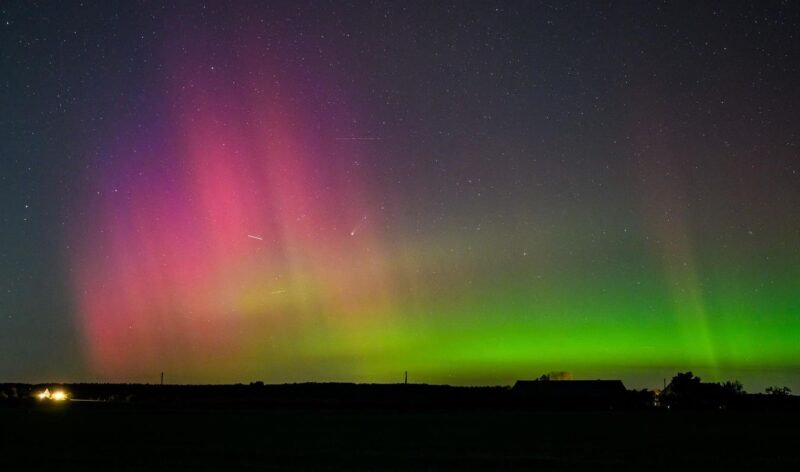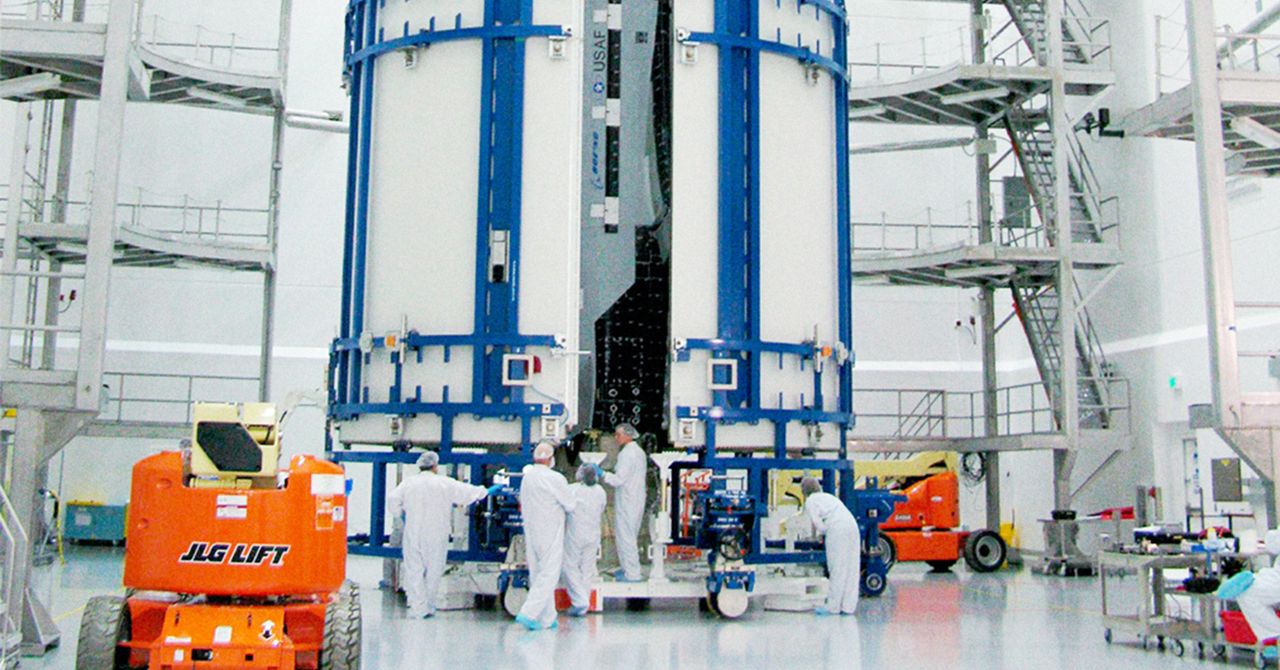Northern lights and the comet Lemmon “C/2025 A6” (center) shine in the night sky over the landscape in eastern Brandenburg. (Photo by Patrick Pleul/picture alliance via Getty Images)
dpa/picture alliance via Getty Images
The Northern Lights may be visible in northern skies from 10 northern U.S. states and Canada this Thanksgiving.
According to a forecast from the National Oceanic and Atmospheric Administration’s Space Weather Prediction Center, a G1-rated geomagnetic storm may be ongoing as it gets dark, with northeastern states best placed.
It comes in the wake not of a solar flare or a coronal mass ejection, but high solar wind speeds. It means an increased chance of aurora at high latitudes.
Northern Lights Forecast: What To Expect
The latest forecast calls for a G1 geomagnetic storm after dark in North America on Thursday, Nov. 27.
NOAA predicts that “chances for isolated
periods of G1 (Minor) geomagnetic storming levels remain possible
through 27 Nov.”
An almost 50%-lit waxing gibbous moon will be visible in the south, with Saturn close by in the southeast. A closer conjunction of the moon and Saturn will occur over the next few nights.
NOAA’s aurora viewline forecast for Nov. 27, 2025.
NOAA
Northern Lights Forecast: Where And When
NOAA’s latest aurora viewlines indicate that aurora displays are a possibility in northern U.S. states and Canada, with 10 U.S. states having a chance after dark on Thanksgiving night.
U.S. states that may see aurora include Alaska, Washington, Idaho, Montana, North Dakota, South Dakota, Minnesota, Wisconsin, Michigan and Maine.
Since this may be a photographic aurora (see below), for the best views, locate a dark place using the Dark Sky Place Finder and a light pollution map. The darker the northern sky, the more vibrant the display — even during moderate geomagnetic storms. A clear northern sky will be required.
Northern Lights Forecast: Latest Updates
To check visibility in real time, use NOAA’s 30-minute aurora forecast, or download apps such as Aurora Now, My Aurora Forecast or Glendale Aurora for up-to-the-minute alerts and live solar wind data.
Aurora-chasers frequently use the Kp index to predict the intensity of a geomagnetic storm, but for aurora displays, the interplanetary magnetic field’s Bz component is more important. Data on Bz can be found in some of the above apps and on SpaceWeatherLive.com.
Bz determines how easily solar energy enters Earth’s magnetosphere. When Bz points north, Earth’s field resists it; when Bz swings south, the two fields connect, allowing plasma to stream in. A sustained southward Bz of −5 nT or stronger usually signals an imminent display of aurora.
Northern Lights Forecast: How To Photograph Aurora
A mirrorless or DSLR camera is ideal (ISO 1600, 2-10 seconds, f2.8), though newer smartphones are increasingly capable of stunning results. If your smartphone has a Night Mode or Pro Mode, you can capture a beautiful aurora photo with these steps:
- Use your main lens, not the ultra-wide, for sharper results.
- Stabilize the camera using a tripod or rest it on a firm surface such as a car roof, wall, or post.
- Shoot in RAW format if available, as it allows easier post-editing.
- Expect long exposures between five and ten seconds. Even faint glows that look grayish to the eye often appear vividly green, purple or red in photos.
Wishing you clear skies and wide eyes.









